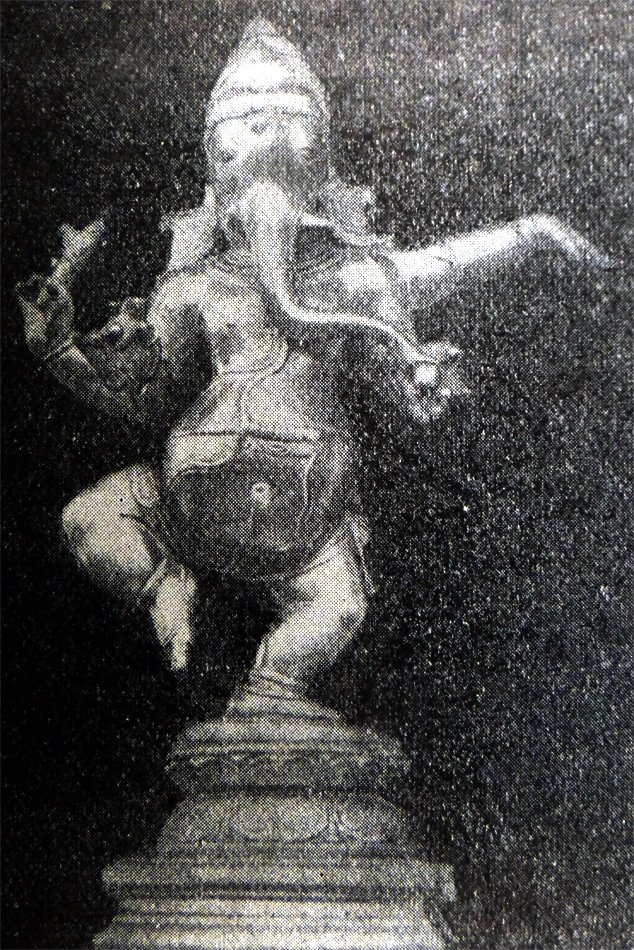The Indian Buddhist Iconography
by Benoytosh Bhattachacharyya | 1958 | 51,392 words | ISBN-10: 8173053138 | ISBN-13: 9788173053139
This page contains an iconography image of Hindu Gods: Four and Twelve-armed Ganapati and represents figure 227-228 of the book Indian Buddhist Iconography, based on extracts of the Sadhanamala English translation. These plates and illustrations represent either photographs of sculptures or line-drawing reproductions of paintings or other representations of Buddhist artwork.
Figure 227-228 - Hindu Gods: Four and Twelve-armed Gaṇapati
 Fig. 227: Four-armed Gaṇapati (Peiping) |
.jpg) Fig. 228: Twelve-armed Gaṇapati (Maharani Chimanabai Gjaekwad collection) |
It is not a fact that Hindu gods [viz., Gaṇapati] were unknown in the Buddhist pantheon or that the Buddhist pantheon wholly consisted of Buddhist gods. [...] A perusal of the Niṣpannayogāvalī and especially the Dharmadhātuvāgīśvara-maṇḍala will show what a large number of Hindu deities was incorporated in the Mandala, and how this large number was tackled intelligently and fitted into the scheme of the Buddhist Maṇḍalas. [...] Amongst the Hindu deities incorporated into the Buddhist pantheon, three deities appear to be of great importance. These are Mahākāla the prototype of Śiva Mahādeva with the Triśūla as the recognition symbol, Gaṇapati the elephant-faced god, and Sarasvatī the Goddess of Learning with her characteristic Vīṇā. Separate Sādhanas are assigned to all of them, and even independent shrines for them are not wanting in the Buddhist countries of the North.
Twelve-armed Gaṇapati:
Colour: red;
Arms: twelve;
Vāhana: mouse;
Āsana: dancing in ardhaparyaṅka.
Only one Sādhana in the Sādhanamālā describes the form of Gaṇapati. He is twelve-armed and one-faced and rides his favourite Vāhana, the Mouse. [...] Fig. 227 is an Indian image of the four-armed Ganapati which is described later in this chapter. This image is in the possession of Dr. Moghe of Khar, Bombay. Fig. 228 is another image with twelve arms in the possession of the Dowager Maharani Chimanabai Gaekwad of Baroda. Both the pieces are Buddhist in character.
Gaṇapati images are also noticed in China and in painted banners of Tibet.
